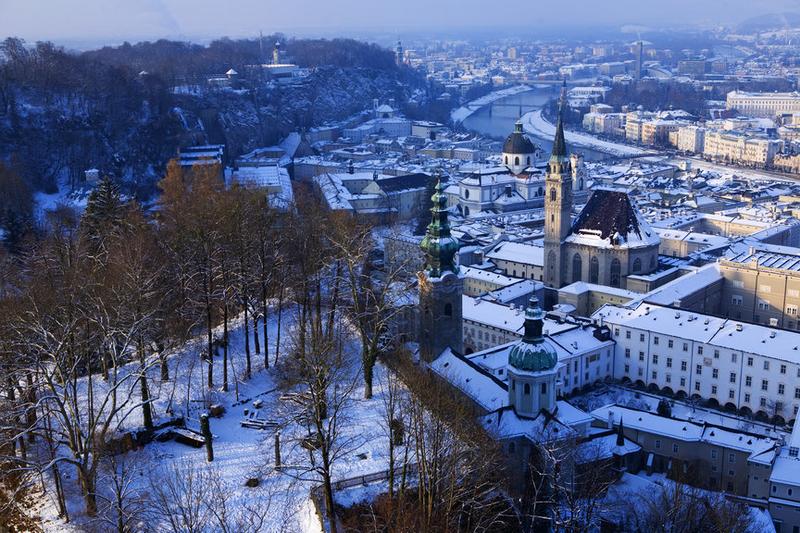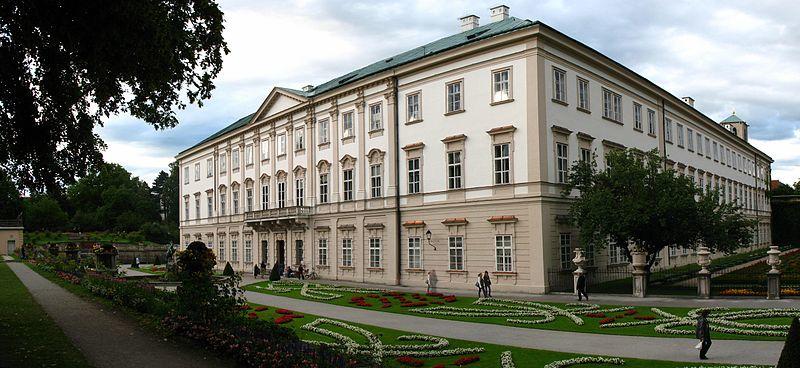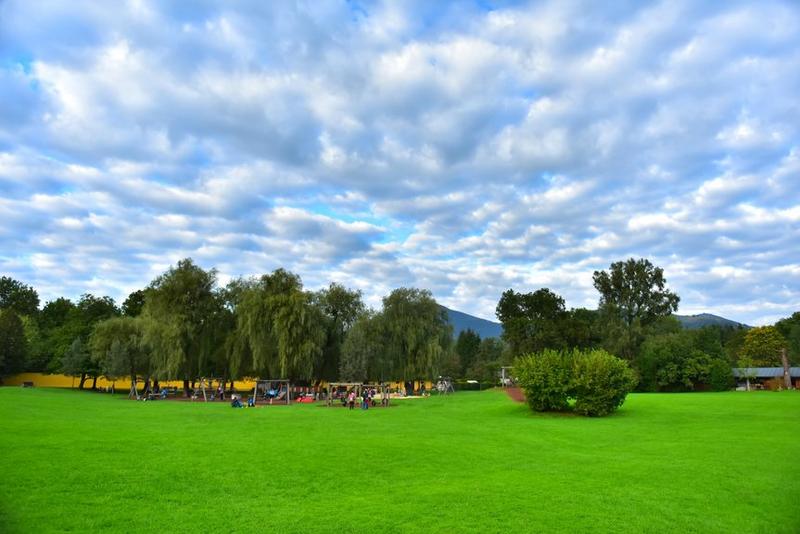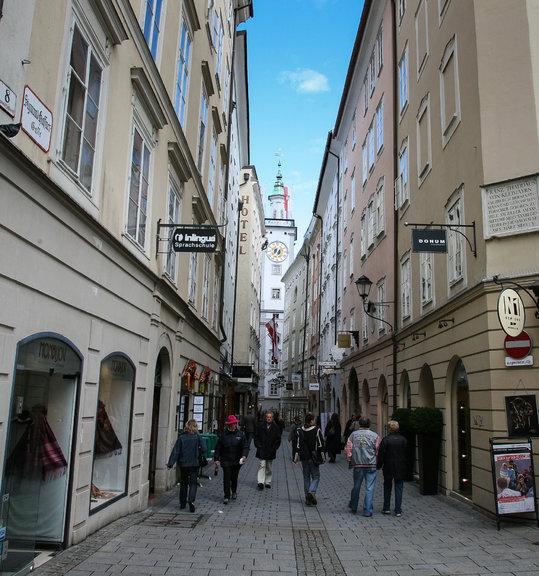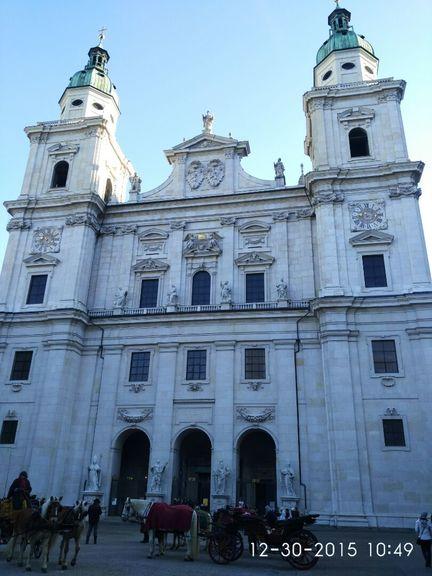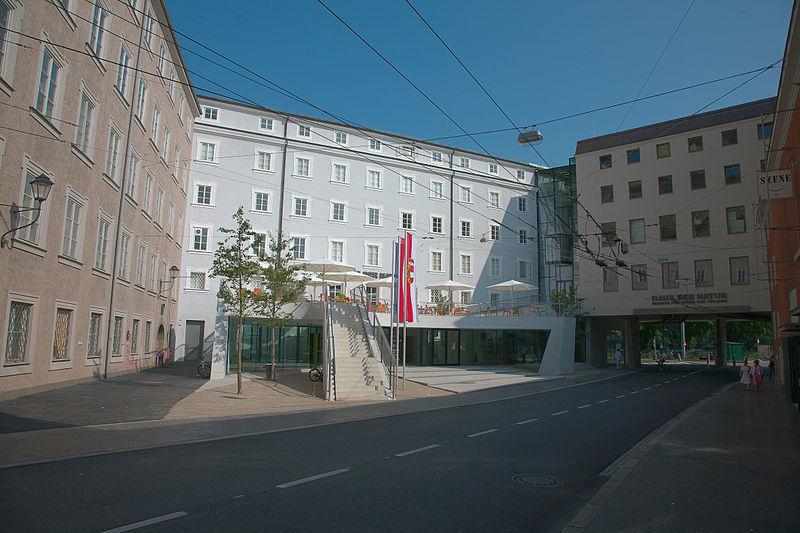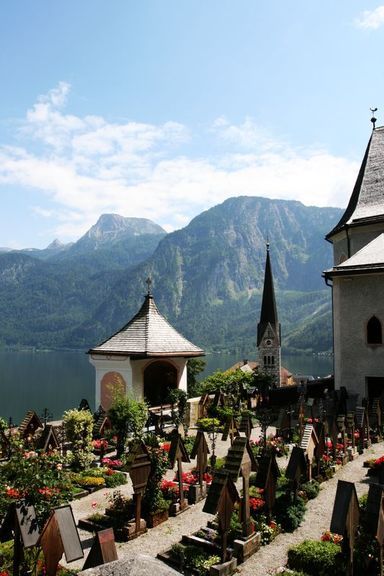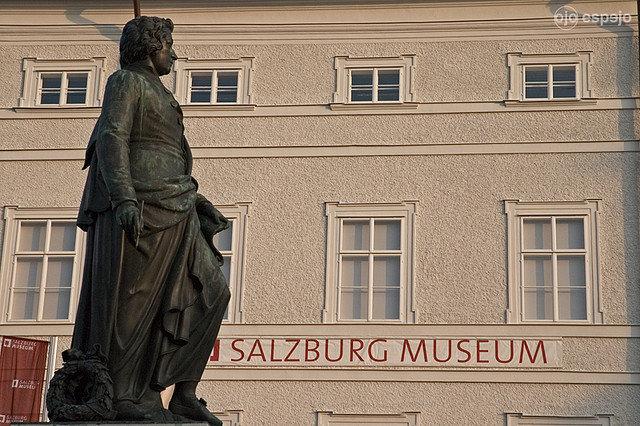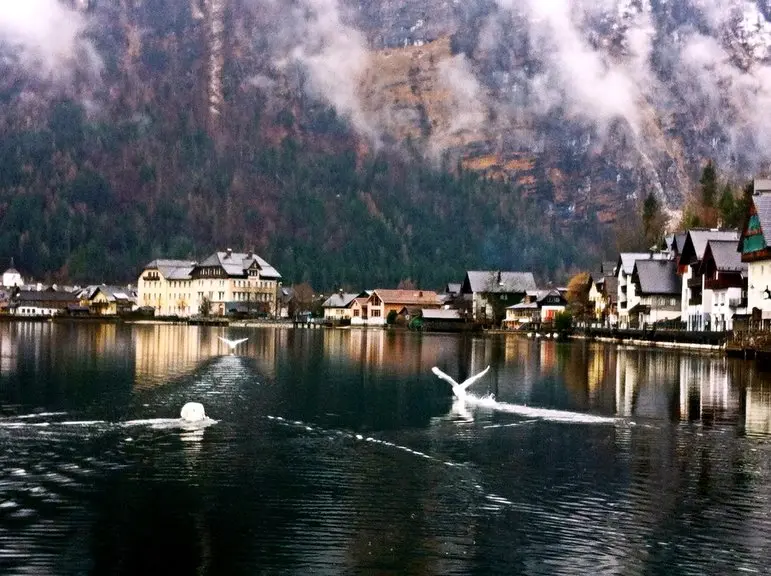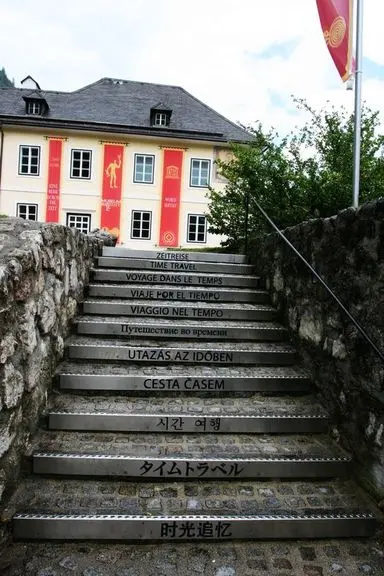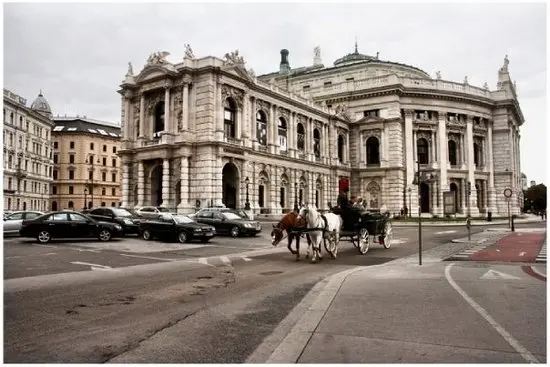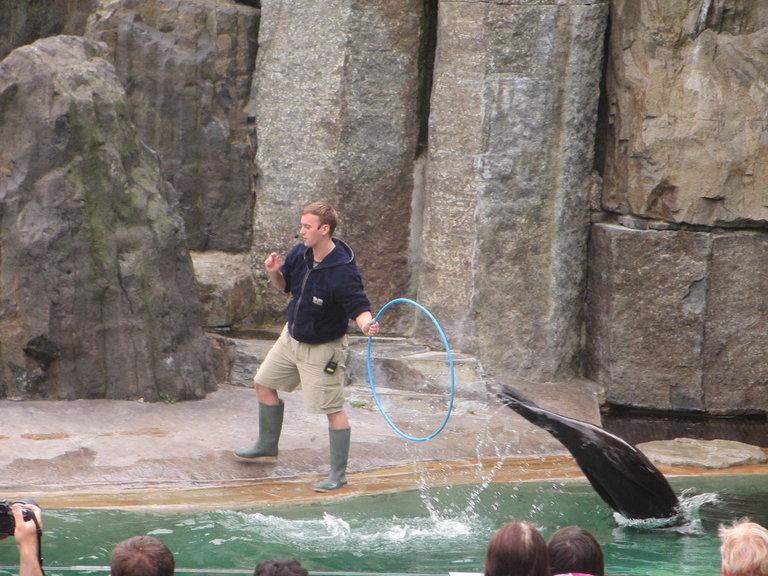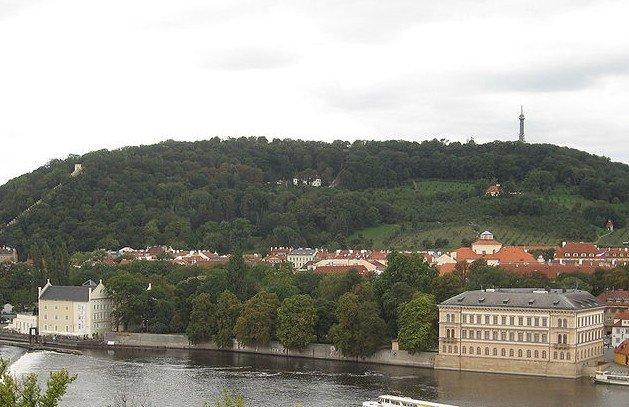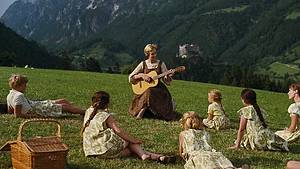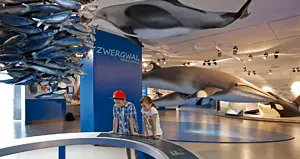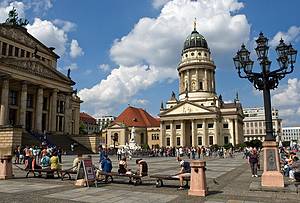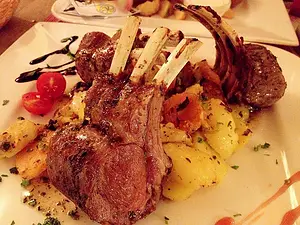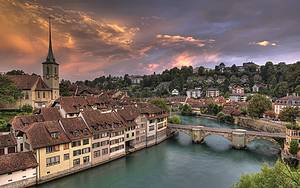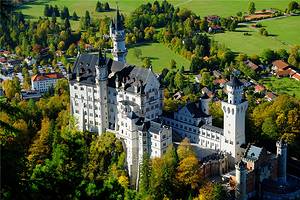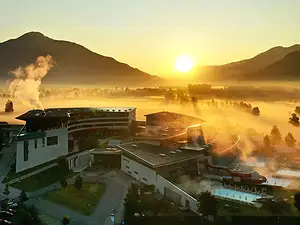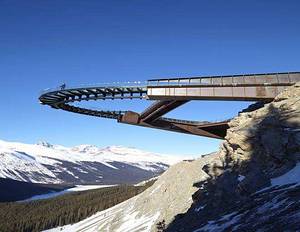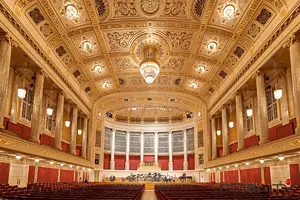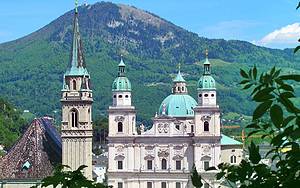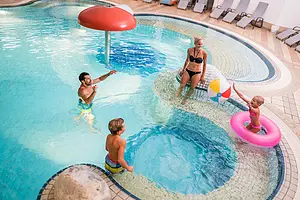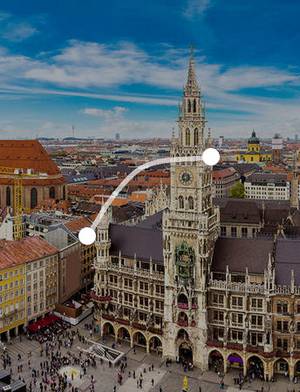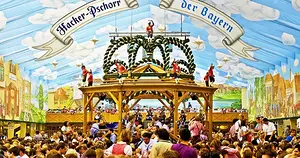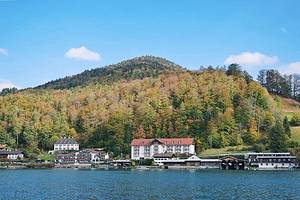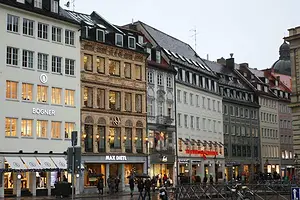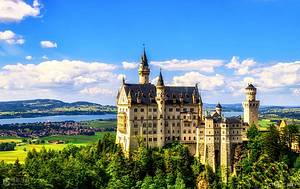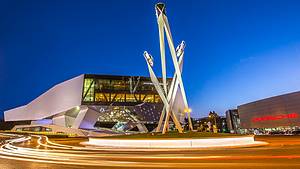Czech Republic - Austria 8-day classic self-driving tour
6 cities |
26 attraction(s) |
total distance 1052
km
 TIPS
TIPS
Day1
Day2
Day3
Day4
Day5
Day6
Day7
Day8
Day1: Cesky Krumlov
2 attraction(s) ·
1 km
1
Krumlov Castle, located in the city of Český Krumlov in Czech Republic, is a medieval castle built in 1240. The entire area was declared a national cultural monument in 1989 and listed as a UNESCO World Heritage site in 1992. It is the second largest castle in Czech Republic after Prague Castle. The castle houses a well-preserved Baroque theater and some original sets and props. Due to its age, only one opera performance is staged in the theater each year, primarily featuring Baroque-era productions.
1
km
2
St. Vitus Cathedral is a landmark in the old town area, the oldest, largest, and most luxurious church in this area. It was built in the early 14th century and is the center of local people's faith and the source of the city's development. This important Gothic-style cathedral with some Baroque influences stands on the banks of the Vltava River, appearing majestic and spectacular. The church's spires reach into the clouds. The cathedral features 15th-century murals, the tomb of Rosenbergs (William and his wife), a Baroque-style colossal organ built in 1716, as well as columns, chapels, and exquisite domes that are worth seeing. The main area of St. Vitus Cathedral spans the entire Czech Krumlov Territory, symbolizing the timeless power and strong influence of its domain.
Day2: Cesky Krumlov > Salzburg
5 attraction(s) ·
236 km
1
The Inner City is the core part of Kromlouf and the entire area was declared a national cultural monument in 1989 and listed as a World Heritage Site by UNESCO in 1992.
225
km
2
Salzburg Fortress, located on the hill in the Old Town area of Salzburg, is an iconic building and one of the largest medieval castles in Europe. It was built in 1077 and expanded by successive archbishops. It attracts over 996,000 visitors annually and is one of the most popular attractions in Austria.
Visitors can explore the museum inside the fortress to learn about ancient weapons, musical instruments, and local customs. They can also enjoy a cup of drink at a café in the castle while admiring the picturesque scenery of the city and the surrounding mountains. The castle regularly hosts classical chamber music concerts featuring popular classical works. However, from a professional standpoint, the cost-effective may not be very high. The open spaces along the north and south walls of the castle are ideal for photography enthusiasts to capture the cityscape.
Fans of the movie "The Sound of Music" may remember the filming location of Nonnberg Abbey. This church is located halfway up the castle hill and has a long history. On the way up the castle hill, there is a fork at the garden entrance of Stiegl restaurant. Turning right uphill leads to the castle, while turning left takes you to a flat path behind the mountain. Following this path, passing through a gateway, Nonnberg Abbey can be seen to the right. The abbey is not wealthy, so they appreciate any donations from visitors who are lucky enough to enter the church for a visit. Even for those who do not visit the castle, they can still enjoy taking photos on the small path in front of the gate of Nonnberg Abbey, which offers a unique view.
Friends who hold a residence permit in Salzburg can enter the castle for free, but it does not include discounts for the small train. They have to walk up the hill and present their visa or other valid documents at the ticket office at the castle entrance to exchange for a ticket. This discount has been available for several years, but how long it will last is still unknown.
5
km
3
Mirabell Palace, formerly known as Mira Bel, was a white building constructed by Archbishop Wolf Dietrich for his mistress. In that feudal and closed era, it was quite sensational for a bishop to make such a bold move for his lover. One could say that he had the courage to sacrifice for love, or one could argue that he was simply arrogant. After his departure, in order to cover up this scandalous past, it was renamed Mirabell. It is also one of the filming locations for the movie "The Sound of Music."
1
km
4
Mirabell Gardens is not very big, and the scenery mainly relies on the styling and colors of flowers and plants to complement. So, even when it snows in winter, it has a unique feeling of being covered in white snow, but it still lacks a certain flavor.
To the north of Mirabell Gardens is a lawn and a small hill, which is a great place to relax. The garden is divided into different sections. On the east side, there is a small rose garden, and near the avenue on the west side, there is a stone stage and a dwarf garden that can only be seen by climbing stairs and crossing a small bridge. Although the dwarf garden is called a garden, it is actually a circle of trees planted on the ground, surrounded by vivid and lifelike dwarf sculptures. Unfortunately, it is closed in winter.
Inside the building in the garden, there are offices of various government departments and the famous Marble Hall (Marmorsaal), which has witnessed countless weddings. The Marble Hall is also a typical Baroque-style hall and is frequently used for concerts to popularize and entertain the public and tourists. In recent years, during the Chinese Spring Festival, the mayor of Salzburg has also held meetings with Chinese overseas Chinese and students here, inviting Chinese friends to celebrate the Chinese New Year together.
7
km
5
Hellsbrunn Palace is a Baroque villa located in the southern suburbs of Salzburg, Austria. It was built by the Archbishop of Salzburg between 1613 and 1619, meaning "clear spring". Hellsbrunn Palace served as the bishop's summer residence during the day, and he would return to Salzburg in the evening, so there are no bedrooms in the palace. Hellsbrunn Palace is famous for its trick fountains in the courtyard and is a popular tourist attraction in the summer.
Day3: Salzburg
1 attraction(s) ·
0 km
1
Salzburg Old Town, the largest UNESCO World Heritage site. It is the only city in the world that contains both medieval and Baroque architectural styles. The left side of the old town starts from the Salzach River, including the central area of Nonntal, the Festungsberg hill, and Salzburg Fortress (FESTUNG HOHENSALZBURG), as well as the entire Mönchsberg mountain (located to the right of Salzburg Fortress). The right side of the old town includes Linzergasse, Steingasse, Äußerer Stein, Kapuzinerberg mountain, and the Capuchin monastery. Most of Salzburg's attractions are concentrated in this area, which was declared a UNESCO World Heritage site in 1996.
Every year, 1-2 weeks before Christmas, Salzburg celebrates Krampus Night. Krampus is the evil twin brother of Santa Claus, and during this time, he roams the streets of the old town wearing a scary demon mask and carrying branches or whips to punish naughty children. It is common to hear children screaming and see them running away in fear.
Day4: Salzburg
3 attraction(s) ·
5 km
1
Hohensalzburg Fortress is a castle in the Austrian city of Salzburg, situated on Castle Hill. It is one of the largest medieval castles in Europe, measuring 250 meters long and 150 meters wide. The castle was initially constructed in 1077 and expanded over time by successive archbishops. In 1515, a cargo cable car was built, possibly the oldest cable car in the world.
3
km
2
The Salzburg Cathedral is a 17th-century Baroque building, the cathedral of the Catholic Archdiocese of Salzburg, located in the city of Salzburg, Austria. It is the place where Mozart was baptized. The original Romanesque church was heavily damaged in 1598 and had to be demolished and rebuilt as a Baroque building. The foundation was laid in 1614 and completed in 1628. It is 466 feet long and 109 feet high.
3
km
3
The Natural History Museum was built in 1924. The aquarium is one of the most beautiful in Central Europe and highly recommended. Visitors can experience a close-up view of colorful tropical fish, as well as Mediterranean, Amazonian, and local aquatic species.
Day5: Hallstatt > Salzburg > Obertraun
4 attraction(s) ·
166 km
1
A hundred years ago, before Hallstatt was known to the world, it was mainly a small town with a mining industry that excavated salt mines in the surrounding mountains. Today, the preserved salt mine allows you to relive the past, where you can walk through the deep tunnels dug by miners and even try out an exciting miner's slide. The salt mine is located on the mountain near the entrance of the town of Hallstatt, which can be reached by climbing or taking a cable car. The view of the lake from the mountain is breathtaking.
9
km
2
Pfarrkirche und Beinhaus
The Catholic church halfway up the mountain is the most important church in the town of Hallstatt. Over 60% of the population in Hallstatt are Catholics. Adjacent to the church is the town cemetery, which includes individuals of different faiths, including Protestantism. Due to limited space in the cemetery, it gradually became crowded over time. Eventually, a custom developed where the remains of the deceased were moved to make room for new burials, while the skulls were left in a corner of the church for remembrance. Over 600 skulls are stacked together, with elegant inscriptions of names, birth and death dates, as well as cross and rose patterns. Beyond the solemnity, there is a hint of warmth. This is the origin of the ossuary. It is a special part of Hallstatt's history, a tribute to life and sincerity.
76
km
3
The Salzburg Museum is a new museum opened in recent years. It incorporates many new concepts and is divided into different areas. Visitors can gain a comprehensive understanding of the city's modern history, archaeological treasures, culture, fine arts, photography, and lifestyle. The author thinks it is definitely worth a visit. If time is limited and you can't visit many museums, you can choose between the Castle Museum and this museum.
82
km
4
The Hallstatt-Dachstein-Salzkammergut Cultural Landscape is exceptionally captivating. The Blue Lake is nestled among mountains, with beautifully decorated houses perched on rocks. Despite being far from major city roads, you will leave with a deep impression. Please enjoy the scenic views of the small village, mountains, and forests when you come here.
Day6: Hallstatt > Vienna
4 attraction(s) ·
289 km
1
Halstatt Center Square's world cultural heritage museum may be the smallest museum in the world, but the artifacts displayed here are extremely precious. There are relics from various eras in the local history spanning nearly 7000 years, including clothes and salt mining tools dug out from the original salt mines, daily utensils from the Iron Age, and even the earliest model of a steamship.
281
km
2
Schoenbrunn Palace
Schönbrunn Palace (German: Schloss Schönbrunn) is a baroque architectural masterpiece located in southwest Vienna, Austria. It was formerly the imperial palace of the Holy Roman Empire, the Austrian Empire, the Austro-Hungarian Empire, and the Habsburg dynasty. Today, it is one of Vienna's most famous tourist attractions and the palace and its gardens are listed as a UNESCO World Heritage Site.
8
km
Day7: Vienna > Prague
4 attraction(s) ·
348 km
1
Vienna developed from early Gothic and Roman settlements and became the capital of the Holy Roman Empire (Austria-Hungary) by the medieval period, showcasing rich Baroque influences. From the early great "Vienna School" to the "Founding Era" at the beginning of the 20th century, Vienna has played a unique and important role in the European music scene. Vienna is also a gathering place for architectural art, including Baroque-style castles and courtyards and the late 19th-century ring road, along which Vienna's most important landmarks are scattered: the Hofburg Palace, museums, and People's Park, and so on.
338
km
2
Old Town Square (Staroměstské náměstí in Czech) has a 900-year history and is located between Wenceslas Square and Charles Bridge. It is often crowded with tourists in the summer. The square is surrounded by various architectural styles, including the Gothic Týn Church and the Baroque St. Nicholas Church. There are also many restaurants and cafes around the square. The famous astronomical clock can be found on the exterior wall of the Old Town Hall, and the tower of the Town Hall offers a panoramic view of the Old Town. The square also features a statue of the religious reformer Jan Hus. It is often referred to as Hus Square. Because it is the most famous square in Prague, it is often simply called Prague Square. There is a song by Taiwanese singer Jolin Tsai called "Prague Square" (composed by Jay Chou, lyrics by Vincent Fang), which mentions making a wish at the square. However, the lyrics mistakenly mention the "Wishing Wall" on Prague Square (the base of the Jan Hus statue) as the Trevi Fountain in Rome, causing confusion for many people who tried to find the "Wishing Wall" on the streets of Prague. In the past, many lovers used to attach "wishing notes" to the base of the Hus statue, creating a spectacle at Old Town Square. In the Korean drama "Lovers in Prague," characters Si-Hoo and Young-Woo also stick notes to the statue's base to make plans for another meeting. In 2014, the Prague municipal government repaired the Hus statue, removed the notes from the base, and installed barriers, eliminating the so-called "Wishing Wall."
2
km
3
The Charles Bridge, built in 1357, is a highly valuable artistic stone bridge. Spanning the Vltava River, it is 520 meters long and 10 meters wide, with 16 bridge piers. It connects the Prague Castle area and the Old Town area, and used to be a must-pass route for coronation processions of past kings. On the bridge, you can enjoy performances by street artists and buy various artworks, such as watercolor paintings depicting the Charles Bridge and puppets dressed in traditional Czech and court costumes. This oldest and longest bridge in Europe features 30 statues of saints, created by Czech Baroque masters in the 17th and 18th centuries, and is known as the "open-air Baroque sculpture art gallery of Europe" by Europeans. The original statues are now preserved in museums, while most of the statues on the bridge have been replaced with replicas. The 8th statue on the right side of the bridge, St. John, is the guardian of the Charles Bridge, and in the middle of the railing is engraved with the location where St. John was thrown from the bridge.
9
km
4
Prague Zoo was opened in 1931 and its mission is to advance biological research, conserve wildlife, and educate the public. It covers an area of 45 hectares and houses 4,400 animals of 670 species from around the world. In 2007, Forbes Traveler Magazine named Prague Zoo as one of the best zoos in the world. The zoo is divided into several exhibition halls and areas, and it takes a full day to visit them all. In late 2004, the zoo opened a new Indonesian Rainforest exhibition hall, covering an area of 2,200 square meters, where visitors can experience the tropical Southeast Asia and see rare animals like orangutans and Komodo dragons. In April 2009, a new exhibition area called the "Children's Zoo" opened, where children can find various domestic animals such as goats, sheep, pigs, miniature horses, rabbits, chickens, ducks, and geese.
Day8: Prague
3 attraction(s) ·
10 km
1
Prague Castle was once the residence of the Czech royal family and is now the seat of the president and government. It offers a magnificent view of the old town. The castle houses the Crown Jewels of Bohemia. With a length of 570m and an average width of about 130m, Prague Castle is the largest ancient castle in the world. The main attractions within the castle are St. Vitus Cathedral, Golden Lane, and the Old Royal Palace. St. Vitus Cathedral, the most ancient part of the city, has a history of over 1000 years. It is a grand black Gothic building and highlights include 20th-century stained glass windows, the tomb of St. John, and St. Wenceslas Chapel. The large colored windows of the mid-period church are renowned works of the famous Prague painter Mucha. Every day at noon, the Changing of the Guard ceremony takes place at the Old Royal Palace, which is quite unique.
Golden Lane is a short, cobblestone street within the castle. On both sides of the road are charming and exquisite small houses. Originally, it was the residence of servants and craftsmen, and later earned its name due to the gathering of alchemists who worked for the king. It gradually became a slum after the 19th century. In the mid-20th century, it was redeveloped and the original buildings were transformed into shops selling various souvenirs and handicrafts. One of the former residences of the famous writer Kafka is also located here.
4
km
2
Petrin Hill is the highest hill in Prague. Petrin is famous for its elegant gardens and orchards, and is also a popular place for couples to go on dates. The Mirror Maze is one of the highlights of Petrin Hill and definitely worth a visit.
6
km
3
Letná Park is a large park in Prague, Czech Republic, located on a high ground above the steep riverbank of the Vltava River, offering a great view of the Old Town of Prague.



